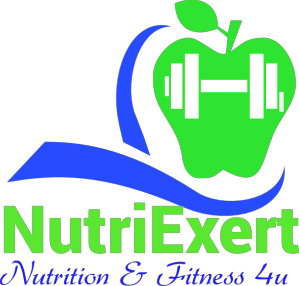I have recently undergone knee surgery due to an injury sustained during football practicee. I am still recovering, but during this period it keeps bringing me back to my years during internship when I did a rotation on 'Surgery, Trauma and Sepsis, Here are some of the nutrients involved during recovery and wound healing;
nutrients involved in wound healing include the following:
Protein
There is an increase in demand for protein in the presence of a wound protein is required as part of the inflammatory process, in the immune response and in the development of granulation tissue. Protein depletion can affect the rate and quality of wound healing (Gray and Cooper 2001). The main protein synthesised during the healing process is collagen, and the strength of the collagen determines wound strength.
The amino acid arginine becomes essential during severe stress. It is abundant in the structure of collagen, and increases its tensile strength. Arginine metabolism is also related to the production of nitric oxide, which is bactericidal, and also aids wound healing through microvascular and haemodynamic changes.
Carbohydrate
As part of the healing process the body enters a hypermetabolicphase (increase rate of energy usage), where there is an increase in demand for carbohydrate. Cellular activity is fuelled by adenosine triphosphate (ATP) which is derived from glucose, providing the energy for the inflammatory response to occur. In the case of insufficient carbohydrate, the body breaks down protein to provide glucose for cellular activity (Gray and Cooper 2001). Therefore, in order to correct hypoalbuminaemia (a medical condition where blood levels of albumin are abnormally low), carbohydrate is required as well as protein.
Fats
Fats have a key role in cell membrane structure and function. Certain fatty acids are essential, as they cannot be synthesised in sufficient amounts, so must be provided by diet. The role of essential fatty acids in wound healing is unclear, but as they are involved in the synthesis of new cells, depletion would certainly delay wound healing. It is debatable as to whether omega-3 polyunsaturated fatty acids (PUFAs) are more beneficial than omega-6 PUFAs. Omega-3s are anti-inflammatory, which aids wound healing, but may inhibit clotting which is disadvantageous (Williams and Leaper 2000).
Water
Meeting hypermetabolic needs may leave the body dehydrated. Not only is it essential to maintain hydration, but the need for hydration increases if a wound is draining or if a person is on an air-fluidized therapy bed. Trauma patients' daily requirement of water may range from 1500 to 2000 mL/day (Leininger S 2002).
nutrients involved in wound healing include the following:
Protein
There is an increase in demand for protein in the presence of a wound protein is required as part of the inflammatory process, in the immune response and in the development of granulation tissue. Protein depletion can affect the rate and quality of wound healing (Gray and Cooper 2001). The main protein synthesised during the healing process is collagen, and the strength of the collagen determines wound strength.
The amino acid arginine becomes essential during severe stress. It is abundant in the structure of collagen, and increases its tensile strength. Arginine metabolism is also related to the production of nitric oxide, which is bactericidal, and also aids wound healing through microvascular and haemodynamic changes.
Carbohydrate
As part of the healing process the body enters a hypermetabolicphase (increase rate of energy usage), where there is an increase in demand for carbohydrate. Cellular activity is fuelled by adenosine triphosphate (ATP) which is derived from glucose, providing the energy for the inflammatory response to occur. In the case of insufficient carbohydrate, the body breaks down protein to provide glucose for cellular activity (Gray and Cooper 2001). Therefore, in order to correct hypoalbuminaemia (a medical condition where blood levels of albumin are abnormally low), carbohydrate is required as well as protein.
Fats
Fats have a key role in cell membrane structure and function. Certain fatty acids are essential, as they cannot be synthesised in sufficient amounts, so must be provided by diet. The role of essential fatty acids in wound healing is unclear, but as they are involved in the synthesis of new cells, depletion would certainly delay wound healing. It is debatable as to whether omega-3 polyunsaturated fatty acids (PUFAs) are more beneficial than omega-6 PUFAs. Omega-3s are anti-inflammatory, which aids wound healing, but may inhibit clotting which is disadvantageous (Williams and Leaper 2000).
Water
Meeting hypermetabolic needs may leave the body dehydrated. Not only is it essential to maintain hydration, but the need for hydration increases if a wound is draining or if a person is on an air-fluidized therapy bed. Trauma patients' daily requirement of water may range from 1500 to 2000 mL/day (Leininger S 2002).

 RSS Feed
RSS Feed